Key takeaways:
- Coral reefs, known as the “rainforests of the sea,” have rich biodiversity and are vital for marine life, supporting about 25% of all ocean species.
- Threats to coral reefs include climate change, pollution, and overfishing, which disrupt their ecosystems and jeopardize their survival.
- Conservation strategies such as marine protected areas, restoration efforts, and community engagement are essential for preserving these ecosystems.
- Species like clownfish, parrotfish, and blue tang are crucial to maintaining the health and balance of coral reef environments through their unique roles.
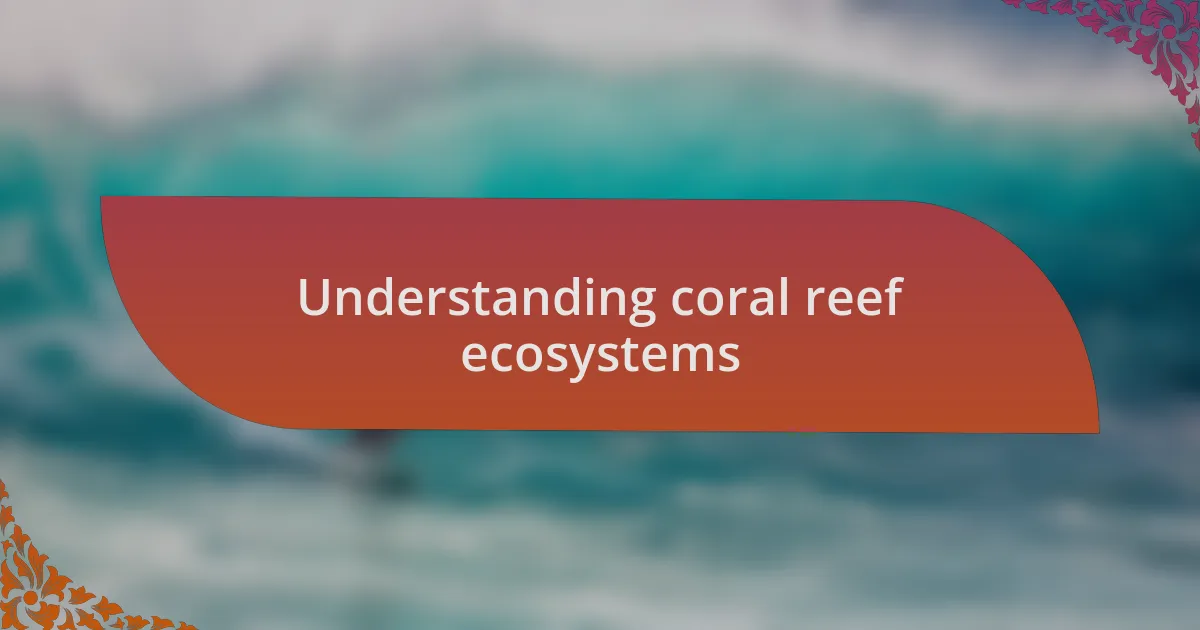
Understanding coral reef ecosystems
Coral reef ecosystems are often described as the “rainforests of the sea” because of their rich biodiversity. When I first dove into a reef, the burst of colors and the dance of marine life left me in awe. It’s fascinating to think how these structures, built primarily by tiny coral polyps, provide shelter, food, and breeding grounds for countless species.
Moreover, coral reefs rely on intricate relationships with other marine organisms, such as symbiotic algae called zooxanthellae. These algae not only give corals their brilliant colors but also provide essential nutrients through photosynthesis. Isn’t it remarkable how interconnected life is beneath the waves? Each creature plays a significant role, highlighting the delicate balance within these ecosystems.
Sadly, I’ve seen firsthand the effects of climate change on these vibrant habitats. Bleaching events can turn a thriving reef into a ghostly white landscape, stripping it of life. It makes you wonder: what can we do to protect these treasures before they disappear? Understanding these ecosystems is crucial, as they are not only beautiful but vital for ocean health and human well-being.
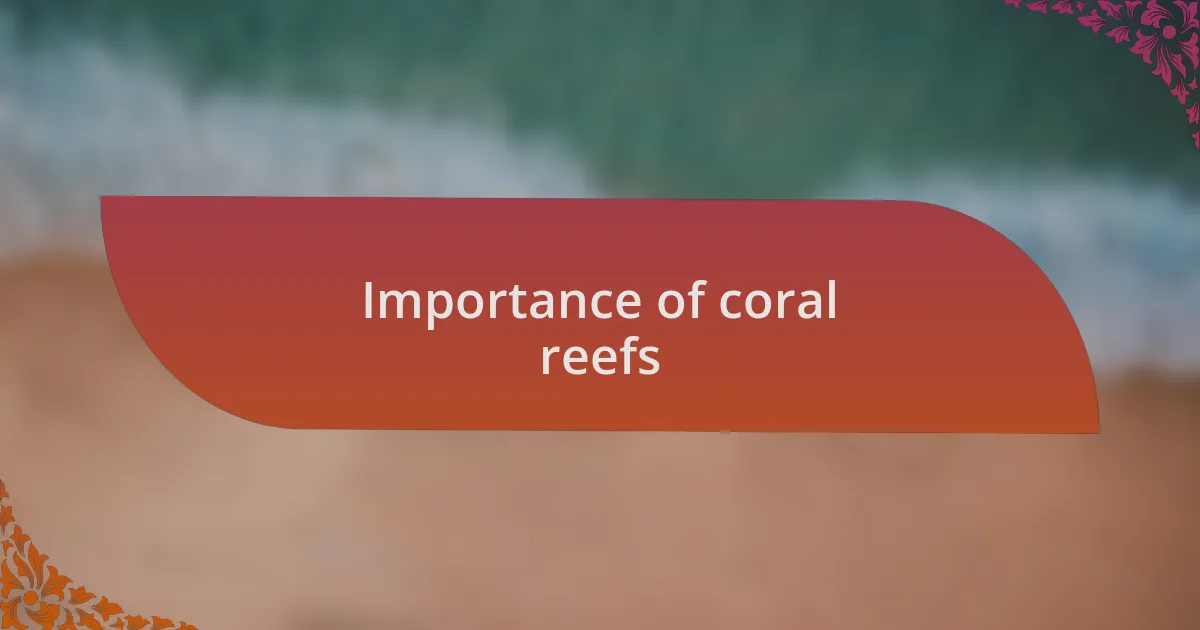
Importance of coral reefs
Coral reefs are essential to marine life, serving as home to approximately 25% of all ocean species. I remember snorkeling over a reef teeming with fish, and it struck me how many creatures depended on these vibrant ecosystems for survival. When I think about the sheer variety of life that thrives in these waters, it becomes clear that coral reefs are the backbone of ocean biodiversity.
Beyond their ecological importance, coral reefs also provide significant economic benefits to coastal communities. I once spoke with a local fisherman who shared how his family’s livelihood relied on healthy reefs to sustain fish populations. Did you know that millions of people around the world depend on reefs for food and income? It’s a stark reminder of the tangible ways we’re all connected to these underwater gardens.
Additionally, coral reefs play a pivotal role in protecting coastlines from erosion and storms. I vividly recall standing on a beach after a storm, witnessing the odd calm that followed—a calm made possible by healthy reefs that act as natural barriers. Their importance cannot be overstated; without them, our shorelines would be far more vulnerable. How can we, then, honor and protect these vital ecosystems for future generations?
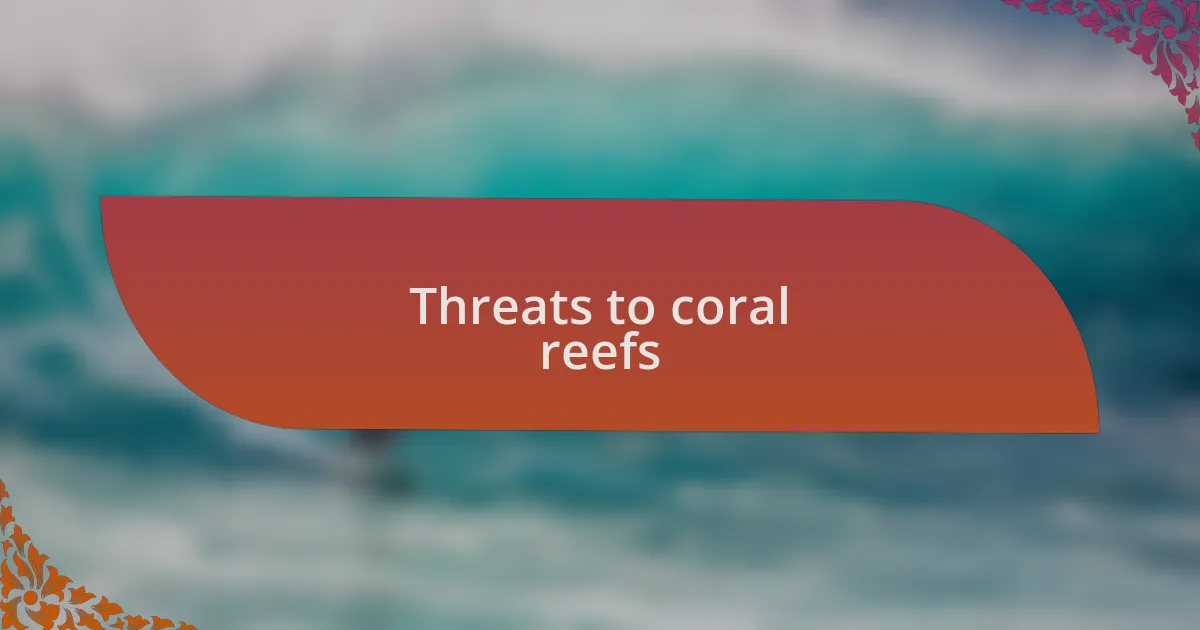
Threats to coral reefs
Coral reefs face numerous threats that jeopardize their survival. One significant issue is climate change, which leads to coral bleaching—a phenomenon I witnessed firsthand during a diving trip. Watching once-vibrant corals turn ghostly white was a heartbreaking experience. It made me realize how sensitive these ecosystems are to temperature changes and emphasizes the urgent need for action to mitigate climate impacts.
Another alarming threat comes from pollution. I recall visiting a reef where murky waters clouded the once-clear view of the marine life beneath. Runoff from agricultural land and plastic waste directly harm these delicate environments. It’s frightening to think that the very water that supports life can also suffocate it. Have you ever considered how everyday actions might contribute to this pollution? It’s a sobering thought, reinforcing the need for each of us to be mindful of our ecological footprint.
Overfishing poses yet another challenge, disrupting the balance within reef ecosystems. I once spoke to a marine biologist who described the emptying of fish populations due to over-exploitation. It was a stark reminder that these vibrant habitats rely on a delicate balance of species to thrive. Without proper management, we risk not just the coral but the entire web of life that depends on it. How can we advocate for sustainable practices that protect these incredible underwater cities?
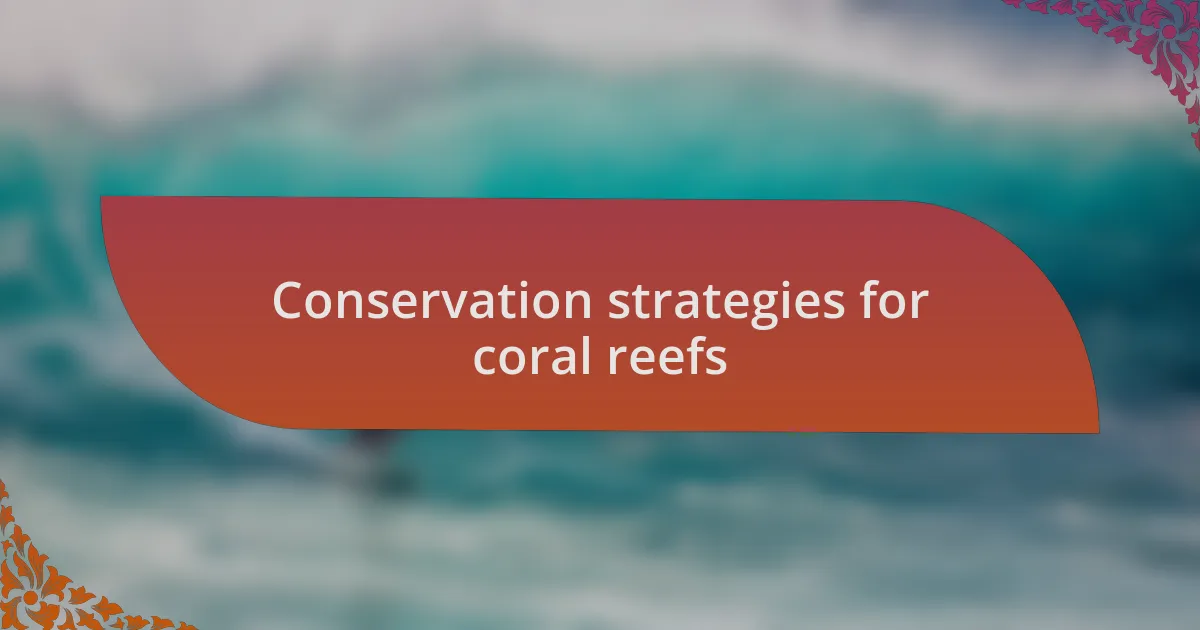
Conservation strategies for coral reefs
One effective conservation strategy for coral reefs is the establishment of marine protected areas (MPAs). During a visit to an MPA, I noticed a striking difference in biodiversity compared to surrounding areas. It was as if the reef was breathing with life; colorful fish swarmed around the corals, and the waters were crystal clear. How can we support such initiatives? By advocating for stronger protections and responsible tourism practices, we can contribute to the health and resilience of these vital ecosystems.
Restoration efforts also play a crucial role in coral conservation. I remember participating in a coral planting project where we carefully secured baby corals to damaged areas. Witnessing those little fragments grow and thrive was incredibly rewarding. It made me wonder, how many more communities can engage in similar efforts to rejuvenate their local reefs? Every small action counts in restoring balance to these environments.
Education and community engagement are paramount in promoting coral reef conservation. Speaking with local fishermen who shifted their practices to more sustainable methods left a lasting impression on me. They shared how vital these ecosystems are not only for diverse marine life but also for their livelihoods. Have you ever thought about the power of local voices in conservation? By amplifying these stories and providing resources, we can inspire a collective commitment to preserving coral reefs for future generations.
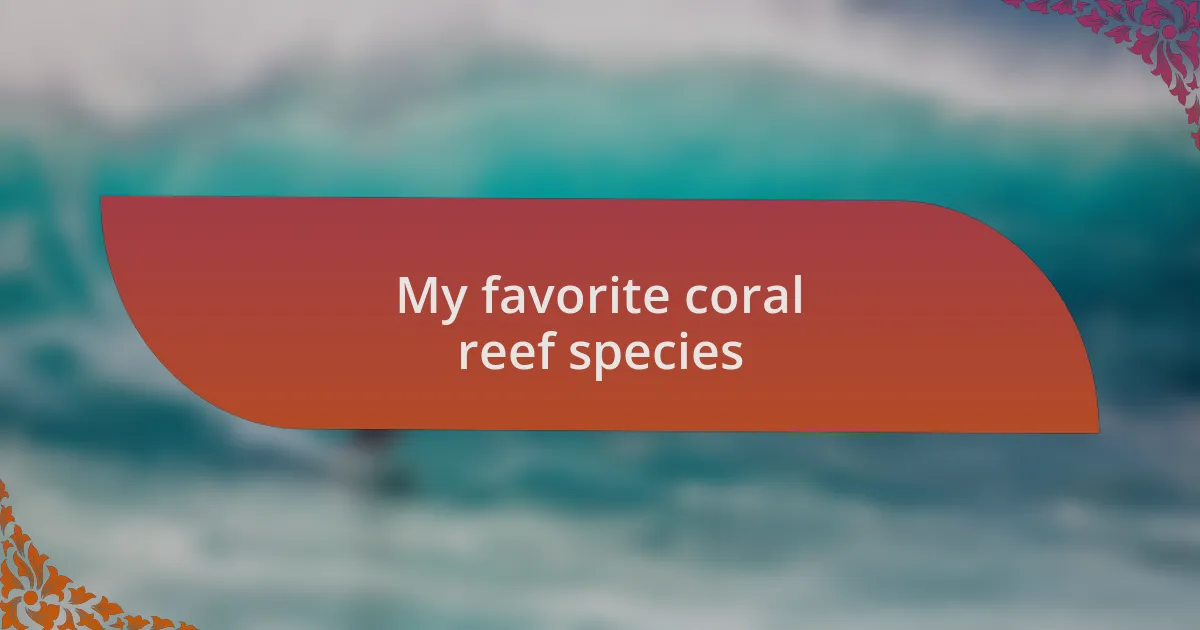
My favorite coral reef species
One of my favorite coral reef species has to be the clownfish. I’ll never forget the first time I spotted one swimming among a vibrant sea anemone during a snorkeling trip. The way they dance around, seemingly unbothered by the anemone’s stinging tentacles, made me marvel at the intricate relationships in the reef ecosystem. Have you ever considered how such unique partnerships contribute to the overall balance of marine life?
Another species that captivates me is the vibrant parrotfish. I remember observing one munching on coral, its beak-like mouth perfectly designed for the task. It fascinated me to learn that these fish help to create sandy beaches, as they grind down coral and excrete it as sand. Is it surprising to think that an entire ecosystem can be shaped by the feeding habits of a single fish?
Lastly, there’s the mesmerizing blue tang. The bright blue of its body against the coral backdrop brought a rush of joy during my last dive. I once experienced a moment when several swam right past me, and I felt a connection to their playful energy. This species not only adds beauty to the reef but also plays a vital role in controlling algae growth. Have you ever felt that sense of wonder when witnessing nature’s artistry in action? It truly highlights the importance of protecting these creatures and their habitat.

Benefits of my favorite species
When I think about the benefits of clownfish, it’s hard not to appreciate their role in the ecosystem. Their relationship with sea anemones is a stunning example of mutualism, where both species thrive. Being able to witness this dynamic firsthand left me in awe; seeing the clownfish dart in and out of the anemone made me realize just how interconnected life in the reef really is.
Parrotfish offer remarkable benefits beyond their beauty. As I watched one diligently grazing on coral, I couldn’t help but marvel at how their feeding habits help maintain reef health. Each bite they take not only shapes the landscape but also reinforces the delicate balance of the ecosystem. Isn’t it fascinating to consider how such small actions can have a profound impact on our environment?
The blue tang stands out not just for its vivid color but also for its algae control within the reef. Observing these fish in action was a revelation; they tirelessly graze on algae, preventing it from overwhelming coral. Reflecting on this made me think about how essential these little creatures are to preserving the coral’s vibrancy. Could understanding their roles inspire more individuals to protect our oceans?